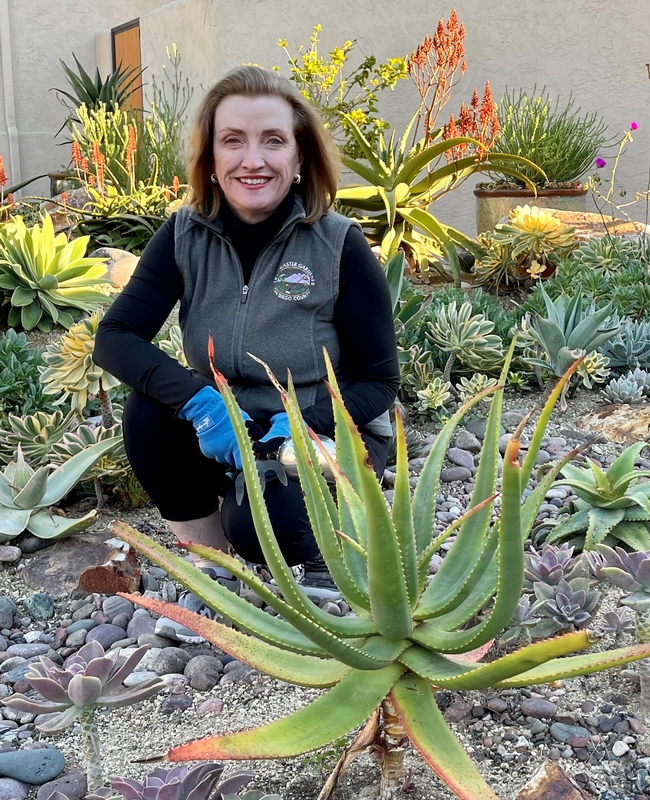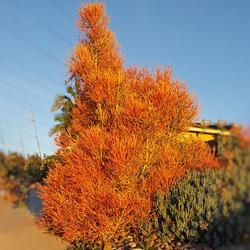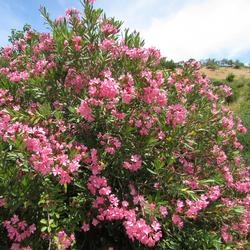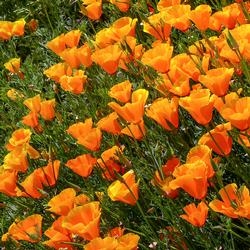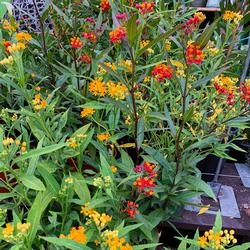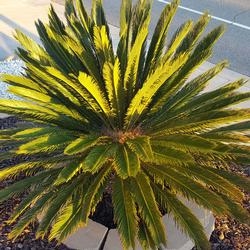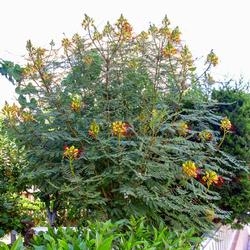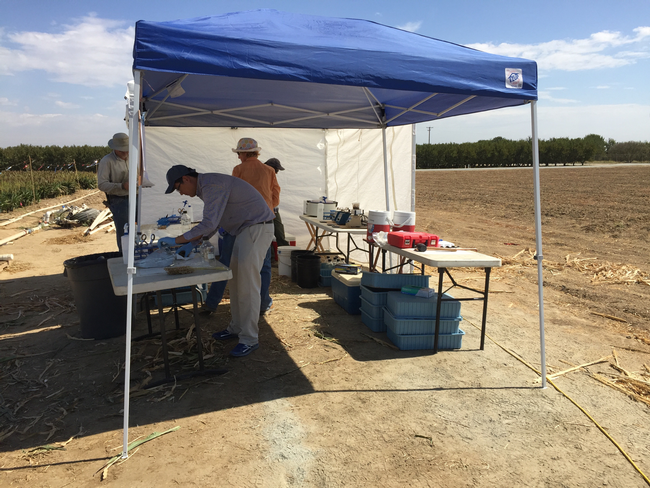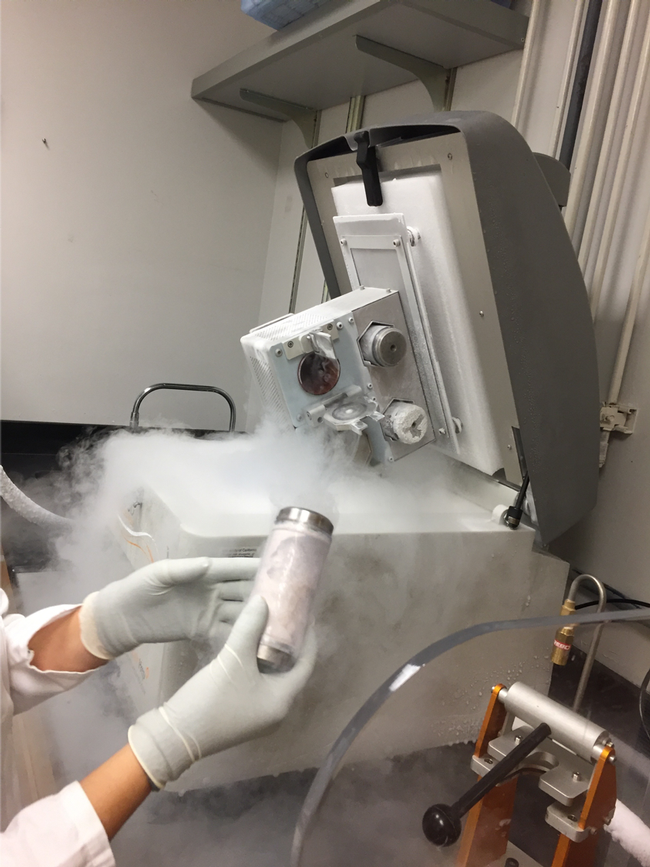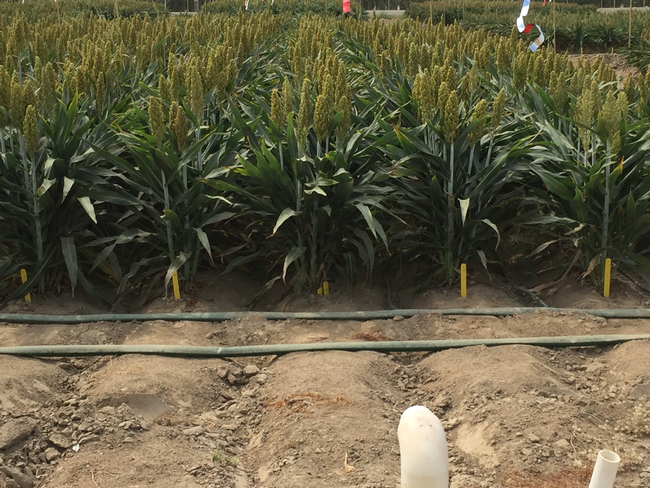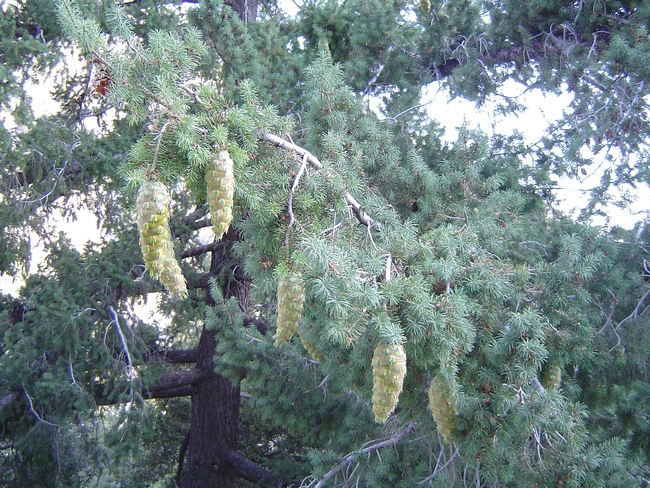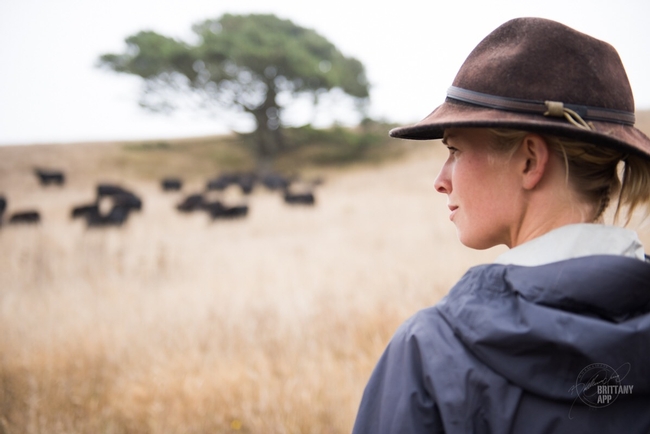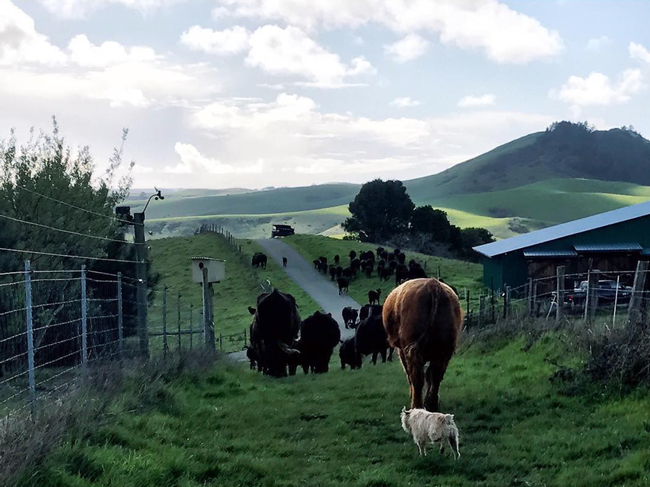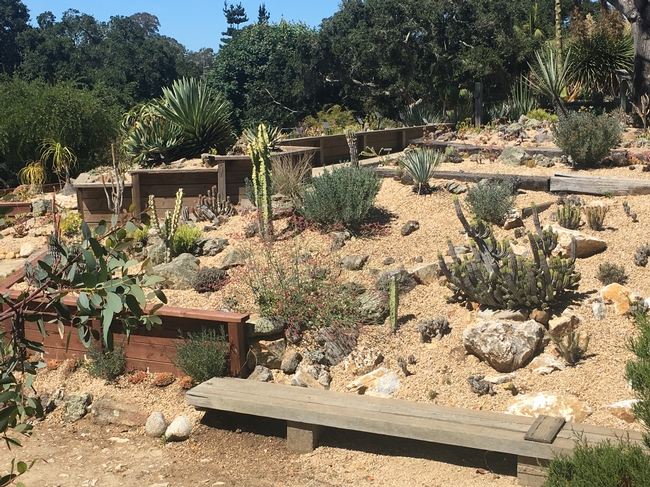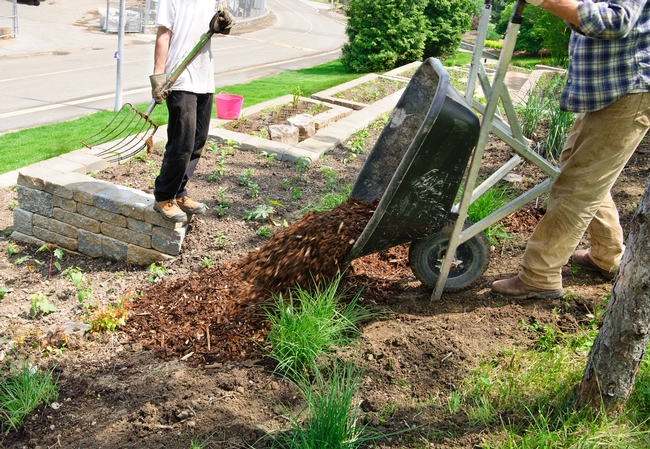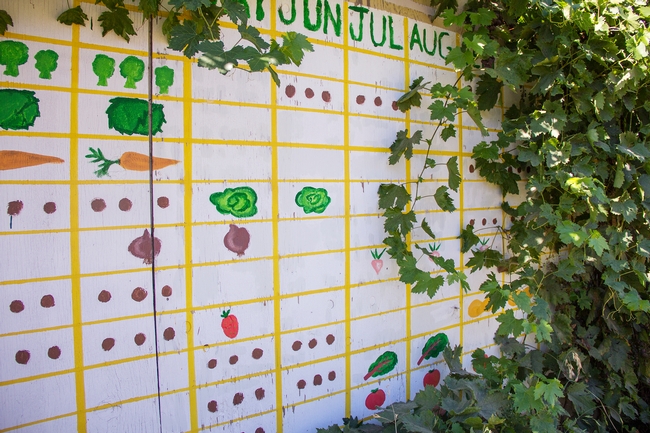Posts Tagged: drought
Drought-tolerant plants can save water, but beware of those that are toxic
UC Master Gardener Francie Murphy was pruning the succulents in her San Diego front yard when an unfortunate accident catalyzed her commitment to communicating the dangers of toxic plants. She trimmed a stem on her drought-tolerant pencil milk bush and milky sap spurted into one eye, causing stinging pain.
“I tried to wipe it out, and in doing so got in both eyes. I was blinded. The pain was unbelievable,” she said.
A nearby friend rushed her to the emergency room where the doctor diagnosed chemical burns to her corneas and washed her eyes with two liters of saline water each. Murphy removed the plant from her garden, but saw it growing throughout her community.
“I knew we had to do something,” she said.
Drought-tolerant plants like cacti, yucca, agaves and aloes have adaptations to protect themselves from wildlife in search of the moisture within their leaves and stems. They have spikes or spines to ward off people and animals. Other plants don't have outward signs of danger. Fire sticks, also known as sticks on fire and pencil cactus and by its scientific name Euphorbia tirucalli, is a very popular succulent in frost-free areas. Its vertical growth habit and showy soft green to reddish-gold stems make it a striking landscape specimen. A native of southern Africa, the smooth, coral-like stems look deceptively harmless. The sap is toxic.
“Fire sticks should be planted far from walkways, in the back of the landscape, where you can see them, but not touch them,” said UC Cooperative Extension natural resources advisor Chris McDonald. “When trimming the plant, wear long pants, long sleeves and eye protection. If the plant is tall, consider protecting your face.”
After Murphy shared her story about these plants with other Master Gardeners, UCCE San Diego gathered a team and worked with colleagues to secure funding from the County of San Diego to develop a website and handouts to inform the community about readily available yet toxic drought-tolerant plants being planted into California landscapes.
The handout can be downloaded from the Plant Safely website (https://ucanr.edu/sites/PlantSafely/). The materials were quickly distributed to nurseries, garden events and Master Gardener help booths, such as at farmers markets, home shows and fairs, and other educational events. A key feature of the website is a database of nearly 100 plants (which can be found here) with photos and descriptions that explain how they are unsafe and how they can be used safely in the landscape. (https://ucanr.edu/sites/PlantSafely/Common_Names/)
Some common yet toxic landscape plants included in the database are:
|
|
|
|
|
|
|
|
|
|
|
“These potentially harmful plants are grown widely in many parts of California,” McDonald said. “It's important to promote drought-tolerant landscapes, and we must also do it in a way that preserves public health.”
View the UC Master Gardener video about safely planting fire sticks (Euphorbia tirucoli):
Genomic gymnastics help sorghum plant survive drought
Scorching temperatures and parched earth are no match for the sorghum plant — this cereal crop, native to Africa, will remain green and productive, even under conditions that would render other plants brown, brittle and barren.
A new study published this week in the journal Proceedings of the National Academy of Sciences provides the first detailed look at how the plant exercises exquisite control over its genome — switching some genes on and some genes off at the first sign of water scarcity, and again when water returns — to survive when its surroundings turn harsh and arid.
“With this research, we are laying the groundwork for understanding drought tolerance in cereal crops,” said Jeff Dahlberg, UC Cooperative Extension sorghum specialist. Dahlberg, co-author of the study, is also director the UC Kearney Agricultural Research and Extension Center in Parlier, one of nine research and extension centers in California that are part of UC Agriculture and Natural Resources.
Dahlberg said researchers can use the knowledge gained from this project to search for drought genes in other cereal crops.
“That has implications for feeding the world, particularly considering changing climate and weather patterns,” he said.
The massive dataset, collected from 400 samples of sorghum plants grown during 17 weeks at Kearney, reveals that the plant modulates the expression of a total of 10,727 genes, or more than 40% of its genome, in response to drought stress. Many of these changes occur within a week of the plant missing a weekly watering or after it is first watered after weeks of no precipitation or irrigation.
Kearney is a 330-acre agriculture research facility in the heart of California's Central Valley, where field-scale, real-world research can be conducted on drought impact on plants and soil microbial communities. The climate is naturally dry throughout the summer, making it ideal to mimic drought conditions by withholding irrigation water.
“People have really shied away from doing these types of experiments in the field and instead conduct them under controlled conditions in the laboratory or greenhouse. But I believe that the investment of time and resources that we put into it is going to pay off, in terms of the quality of the answers that we get, in terms of understanding real-world drought situations,” said Peggy Lemaux, UC Cooperative Extension specialist in UC Berkeley's Department of Plant and Microbial Biology and co-author of the paper.
To conduct the research, the team cultivated sorghum plants under three different irrigation conditions — pre-flowering drought, post-flowering drought and controlled applications of water — over three consecutive years at Kearney.
Each week during the growing season, members of the research team carefully harvested samples from the leaves and roots of selected plants and set up a mobile lab in the field where they could rapidly freeze the samples until they were processed for analysis. Then, researchers at JGI sequenced the RNA in each sample to create the transcriptome data, which reveals which of the plant's tens of thousands of genes are being transcribed and used to make proteins at particular times.
Finally, statisticians led by UC Berkeley statistics professor Elizabeth Purdom parsed the massive transcriptome data set to pinpoint how gene expression changed as the plants grew and were subjected to drought or relief from drought conditions.
“We very carefully controlled the watering conditions, and we sampled over the entire developmental timeframe of sorghum, so [researchers] could actually use this data not only to study drought stress, but also to study plant development,” Lemaux said.
The researchers noticed a few interesting patterns in the transcriptome data. First, they found that a set of genes known to help the plant foster symbiotic relationships with a type of fungus that lives around its roots was switched off in drought conditions. This set of genes exhibited the most dramatic changes in gene activity that they observed.
“That was interesting, because it hinted that the plants were turning off these associations [with fungi] when they were dry,” said John Vogel, a staff scientist at JGI and co-author of the paper. “That meshed well with findings that showed that the abundance of these fungi around the roots was decreasing at the same time.”
Second, they noticed that certain genes known to be involved with photosynthesis were also turned off in response to drought and turned up during drought recovery. While the team doesn't yet know why these changes might help the plant, they provide interesting clues for follow-up.
The data in the current paper show the plant's transcriptome under both normal conditions and drought conditions over the course of a single growing season. In the future, the team also plans to publish data from the other two years of the experiment, as well as proteomic and metabolomic data.
Nelle Varoquaux and Cheng Gao of UC Berkeley and Benjamin Cole of JGI are co-first-authors of the study. Other co-authors include Grady Pierroz, Christopher R. Baker, Dhruv Patel, Mary Madera, Tim Jeffers, Judith A. Owiti, Stephanie DeGraaf, Ling Xu, Krishna K. Niyogi, Devin Coleman-Derr and John W. Taylor of UC Berkeley; Joy Hollingsworth, Julie Sievert and Jeffery Dahlberg of UC ANR KARE; Yuko Yoshinaga, Vasanth R. Singan, Matthew J. Blow, Axel Visel and Ronan O'Malley of JGI; Maria J. Harrison of the Boyce Thompson Institute; Christer Jansson of PNNL and Robert Hutmacher of UC ANR.
This research was funded in part by the Department of Energy (DOE) grant DE-SC001408; the Gordon and Betty Moore Foundation grant GBMF3834; the Alfred P. Sloan Foundation grant
2013-10-27; L'Ecole NormaleSupérieure-Capital Fund Management data science chair and the DOE's Office of Biological and Environmental Research grant DE-SC0012460. Work conducted by the DOE JointGenome Institute is supported by the Office of Science of the DOE contractDE-AC02-05CH11231.
RELATED INFORMATION
- Dealing with Drought: Uncovering Sorghum's Secrets
- Berkeley to lead $12.3M study of crop drought tolerance
- Drought treatment restructures plants' microbiomes
- Microbes associated with plant roots could be a key to helping plants survive drought
Bigcone Douglas-firs are suffering the effects of wildfires and droughts
Bigcone Douglas-fir is an evergreen conifer native to the mountains of Southern California. Repeated wildfires and drought are threatening the species' existence in its native range, reported Bettina Boxall in the Los Angeles Times.
The reporter visited a Santa Barbara County site peppered with tall, dead trees where UC Cooperative Extension fire specialist Max Moritz is studying the species' fate.
"You don't see anything," he said. "It has a fairly depressing quality to it, given the mortality and no regeneration."
The area was burned by the Zaca Fire 11 years ago, something the fire-resistant conifer can generally withstand. Moritz and research assistant Ryan Salladay found evidence that the trees survived the fire, but then died sometime later. They are trying to determine what did them in by recording the aspect of the slope, collecting tree core samples, measuring the water stress in living trees, looking for wildfire impacts, and checking for seedlings.
“The drought-following-fire issue is a total reshuffling of what might come back or survive,” Moritz said.
Change on the range
“When first-generation ranchers succeed, we all succeed,” says Kate Munden-Dixon, a Ph.D. student working with Leslie Roche, Cooperative Extension rangeland specialist with the UC Division of Agriculture and Natural Resources and the UC Davis Department of Plant Sciences.
Munden-Dixon and Roche recently discovered that many new livestock managers aren't plugged into information networks such as UC Cooperative Extension and rancher coalitions that provide science and strategies for making sustainable rangeland management decisions. This lack of connection can make first-generation ranchers more vulnerable when dealing with challenges like drought and climate variability, according to their study, which was recently published in Rangeland Journal.
To help bridge the gap, Munden-Dixon landed a $25,000 Graduate Student Grant from Western Sustainable Agriculture Research and Education, a USDA program, to reach out to new ranchers and rangeland managers.
Why rangelands matter
More than one half of California — 38 million acres — is rangeland that provides open space, healthy watersheds, carbon storage, food, fiber and habitat for diverse plants and wildlife. UC Davis research indicates grasslands and rangeland have become more resilient at sequestering or consuming carbon dioxide pollution than forests in California, making them especially important in a warming world.
But rangeland and livestock production are at risk because more rangeland is being converted to housing and crop production. The average age of ranchers in California is 62, and fewer children are taking over the family ranch.
Enter a new wave of rangeland managers. Many of these young ranchers don't yet have access to the capital required to purchase land and large head of cattle and other livestock. Instead, they often contract with public and private landowners to graze goats, sheep and cattle to restore landscapes and reduce fire vegetation.
“What we really need is support in connecting land and contract opportunities,” says Brittany Cole Bush, an “urban shepherdess” and former contract sheep and goat grazer. She now consults with land owners and public agencies from her home base in Southern California. “We need market research that shows the value that grazing brings to fire abatement, soil conservation and so much more. Market research would increase our value and help us become viable players.”
Expanding Extension
Munden-Dixon is interviewing 40 new rangeland managers from across California to explore how decision-making by different demographics influences adaptation to climate change and quality of life. Munden-Dixon and her team are also hosting workshops to make sure Cooperative Extension specialists understand and can respond to all ranchers' needs.
“There is both a need and opportunity for a new generation of livestock managers that is able to adapt to California's changing climate,” Munden-Dixon says. “This next generation may not look like your typical rancher, so we want to ensure organizations are helping all ranchers succeed, regardless of their demographics or land tenure.”
The power of connection
Munden-Dixon would like to become a Cooperative Extension specialist herself one day. Working with first-generation ranchers reminds her that collaboration and public engagement are critical to addressing issues in sustainable agriculture.
“There is no one answer or single expert when it comes to building healthy food systems,” Munden-Dixon says. “We find solutions when we work together.”
See this story in the Fall/Winter 2018 issue of Outlook, a magazine from the UC Davis College of Agricultural and Environmental Sciences, and at the UC Davis Science & Climate website.
Hot weather tips for the summer garden
This week much of California is under a heat advisory or excessive heat warning, with high temperatures estimated to range from 90 to 108 degrees. Many home gardeners are wondering how they can help their plants, trees or shrubs survive the intense summer heat.
“We are getting a lot of inquiries around the state from people worried about how the extreme temperatures are going to affect the plants or trees in their yards,” said Missy Gable, director of the UC Master Gardener Program. “With a little extra planning, you can help your garden beat the heat and survive the hot summer weather.”
UC Master Gardener volunteers are available to help answer gardening questions and provide advice on gardening during the hot summer months. Here are four quick and easy ways to help make sure your plants and trees not only survive, but thrive.
- Don't fertilize plants or trees during hot summer months
Fertilizers aim to increase the growth of plants and trees. When a fertilizer is applied, especially one that is high in nitrogen, a plant is triggered to produce more green growth. An increase in growth means an increase in water and nutrient needs. During hot spells, it is especially hard to keep up with plant water and nutrient needs as soils dry out quickly and water may not be readily available. Save your plants (and yourself!) from stress by stopping fertilizer application before hot weather hits. - Water trees deeply and less frequently
It sounds counter intuitive to water trees less frequently, but this is exactly what UC environmental horticulture experts recommend. “When watering trees you want to consider the roots below the tree and you want to encourage a network of deep roots. If you are only watering for short periods at a higher frequency, the roots will remain shallow since that is where the tree finds its water supply,” said Janet Hartin, UC ANR environmental horticulture advisor. “Deep roots mean a healthier tree that is less susceptible to disease.”
How much water a plant needs depends on the specific plant, how long it has been in the ground, and the type of soil where it is planted. In general, young plants or newly planted plants require more water than older more established plants. Clay soils absorb water slowly so watering can take longer but is typically done less frequently. This is in contrast to sandy soils that moisten and drain quickly. Typically, watering sandy soils take less time but has to be done more frequently. A Landscape Irrigation Scheduling Worksheet from the California Center for Urban Horticulture (CCUH) can be used to help calculate and determine an annual irrigation schedule for one irrigation zone.
- Mulch, mulch, and more mulch
When temperatures get extreme, having a good layer of mulch prevents soil from heating up excessively and loosing water to evaporation. Apply 4 inches of a medium shred bark mulch to insulate the soil. This protects the fine roots that plants use to feed from the surrounding soil. Mulch also helps maintain healthy soil ecology with earthworms and other de-composers that promote nutrients and oxygen in soil. Finally, mulch will pay for itself by maintaining a more consistent soil moisture so you can water less and have better success with your plants. Be sure to maintain the depth of your mulch to ensure you can benefit from all the services it provides.
An important part of gardening is planning for activities in the garden for future months. When the temperatures are too hot to spend outdoors, you can always start to develop a garden or planting plan. (Photo: Melissa Womack) - Wait to introduce new plants or trees until the fall
In gardening, timing is everything. New plants, whether grown in ground from seed or planted in your landscape from a container, have smaller root systems than more mature plants or plants that have been growing in your landscape for some time. Because root systems on new plants are smaller and need time to develop, these plants require more water more frequently. New plants introduced into a landscape during hot summer months have a significantly higher rate of failure. In California, it is best to introduce new plants in fall when the weather gets cooler. Winter rains can help keep new plants watered so they can establish and thrive in the future when temperatures are high and rainfall is scarce.
Always remember that you should take precautions for yourself while gardening in the summer months, especially during a heat wave. Remember to drink plenty of water and always have at least one quart of water per hour of outdoor activity. Limit time spent outdoors during peak temperatures and schedule any active time during cooler portions of the day. Always wear light loose clothing, a brimmed hat, and sunscreen as protection.
Thankfully we're not trying to garden on the surface of the sun. Unfortunately, sometimes it can feel like it for us and for our plants. Stay cool with these tips and consider planning for the fall to be an important part of your summer gardening activity.


